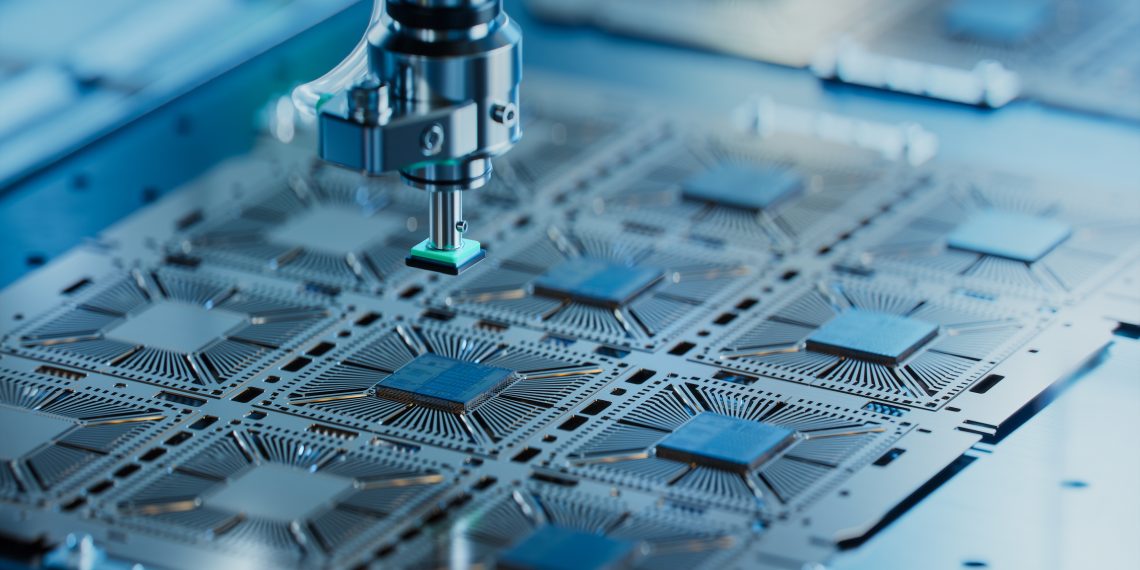As the battle for supremacy in the global electronics manufacturing sector heats up, companies are grappling with the spiraling costs and complexities of semiconductor product development. Staying ahead requires embracing disruptive technologies that could redefine current strategies and engineering methodologies.
Amid labor shortages, supply chain hiccups, and scarce materials, chipmakers are fervently innovating to churn out new semiconductor products. While smaller entities strive to carve out their niche, behemoths like Intel, Samsung, Apple, and the Taiwan Semiconductor Manufacturing Company (TSMC) are in pursuit of that elusive competitive advantage.
Intel showcases innovative glass substrate test units, hinting at the potential for heightened signal performance in advanced semiconductor packaging solutions.
Industry reports position TSMC as the frontrunner in the market, yet its rivals are not far behind. As the boundaries of technology are pushed, the options for viable commercial innovations narrow, setting the stage for a potential industry-wide disruption should a significant breakthrough occur.
Such a breakthrough has the power to either catapult the industry into a new direction or incite a surge of unconventional research and development as leaders scramble to secure their market position.
The cost of participating in the semiconductor market is on the rise, with manufacturing expenses and import prices seeing notable increases from 2019 to 2022. Disruptive technologies are emerging as potential navigational tools to counteract these economic pressures.
Emergent Technologies Poised to Revolutionize Semiconductor Engineering
A select group of innovative technologies stands ready to upend the status quo of semiconductor design, production, and distribution, promising to significantly impact the electronics manufacturing landscape.
- The Self-Healing, Shape-Morphing Soft Composite
At Carnegie Mellon University, a research team has engineered a ‘Thubber,’ a composite material that combines liquid elastomers with gallium indium alloy droplets, achieving remarkable electrical and thermal conductivity.
Thubber’s unique properties allow it to retain flexibility across a wide temperature range and facilitate phase change responses through internal heating, eliminating the dependency on external heat sources.
A glimpse into ‘Thubber,’ a transformative material developed by Carnegie Mellon University, showcasing embedded liquid metal microdroplets.
- Carbon Nanotubes Encased in Polymer
Duke University researchers have devised a new technique to make carbon-based semiconductors commercially viable by wrapping them in a special polymer, transforming their properties and unlocking potential applications in electronics.
- Glass Substrates in Semiconductor Packaging
With its cost-effectiveness, superior thermal properties, and stable physical characteristics, glass is quickly becoming a favored material for advanced semiconductor packaging solutions, especially for high-performance interconnects in cutting-edge electronics.
- Two-Dimensional Ferroelectric Field-Effect Transistors
As AI technology integration challenges the semiconductor industry with high energy demands, two-dimensional ferroelectric field-effect transistors emerge as a promising solution, operating at speeds far surpassing human synapses while consuming minimal energy.
Assessing the Market Readiness of Disruptive Semiconductor Technologies
For these novel semiconductor engineering methods to have a lasting impact, they must demonstrate commercial viability. Although market entry may be distant, as they are designed for future electronics, their potential is undeniable.
Some innovations, like the polymer-wrapped carbon nanotubes, acknowledge a far-off practical application. Similarly, the use of glass substrates faces commercial challenges due to stress and build-up limitations.
Despite a long road to market, these disruptive technologies are not to be viewed with pessimism but rather as harbingers of progress. As interest continues to mount, the pace of development is likely to accelerate, paving the way for the next era of semiconductor engineering.









